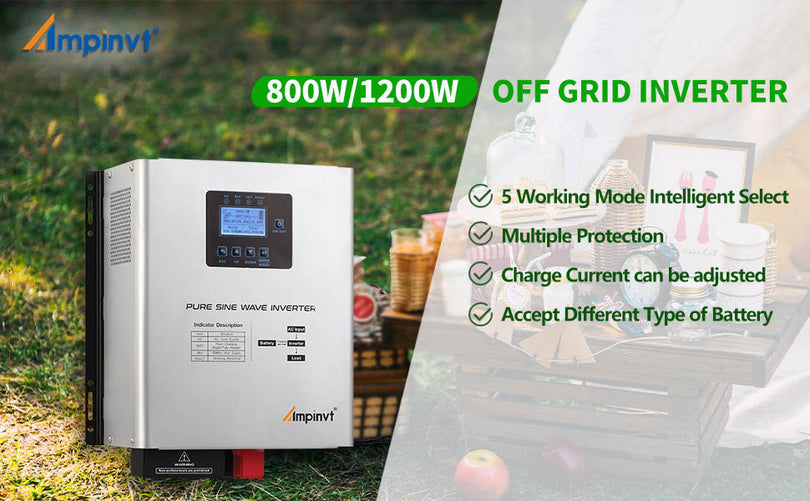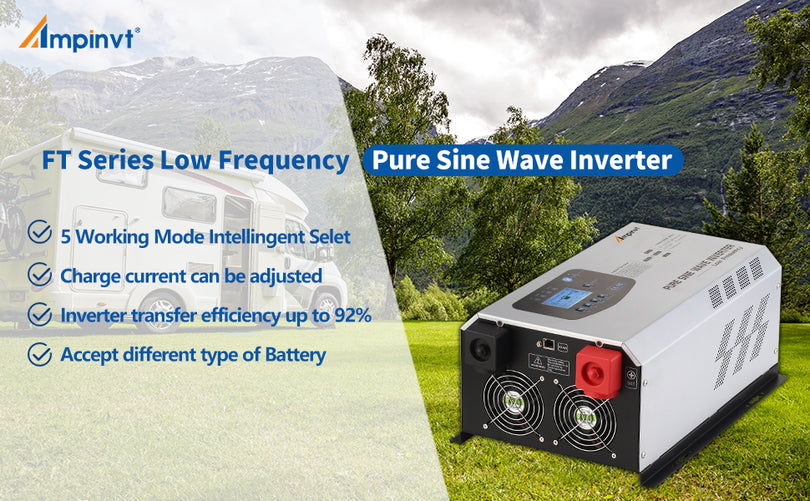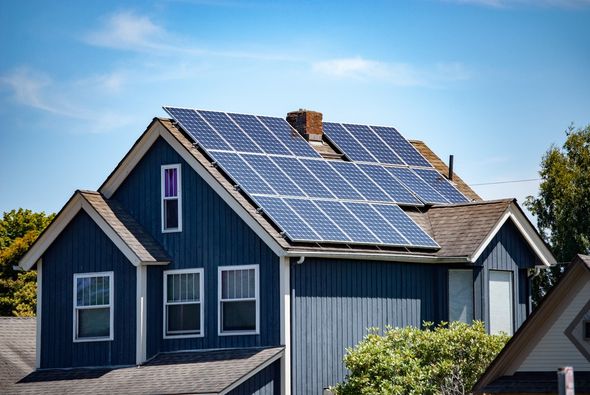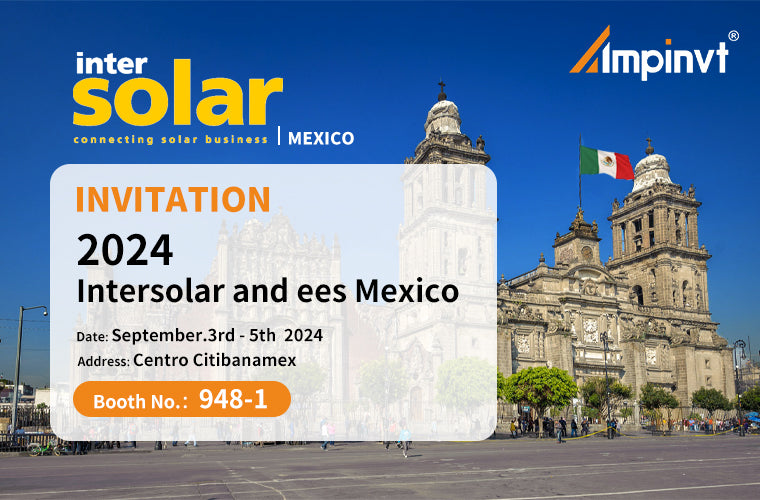With the deepening dependence on renewable energy worldwide, especially the increasing emphasis on distributed photovoltaic power generation and energy storage systems, coupled with policy support for clean energy from governments around the world, such as subsidies, feed in tariffs, mandatory renewable energy quotas, etc., micro inverters are becoming the focus of market attention.
As a key equipment for improving the efficiency, safety, and flexibility of photovoltaic systems, the demand for micro inverters in the market continues to grow. At the same time, due to its unique advantages such as module level MPPT, independent operation, and easy installation and maintenance, it is highly favored in residential, commercial, and small commercial photovoltaic projects. With the continuous advancement and cost reduction of photovoltaic technology, the micro inverter market is showing strong growth momentum.

As one of the key devices to improve the efficiency of photovoltaic power generation, the market demand for micro inverters has shown explosive growth. Especially in developed countries such as Europe and America, the micro inverter market has achieved rapid growth under the combined effects of policy promotion and market demand. According to a report by market research firm Mordor Intelligence, the market size of micro inverters is expected to reach $3.15 billion in 2024 and $7.74 billion by 2029, with a compound annual growth rate of 19.70%. Meanwhile, it is expected that the global demand for micro inverters will reach 12.44 GW by 2025, demonstrating strong market growth momentum.
From the perspective of competitive landscape, the micro inverter market is becoming increasingly fierce. At present, the market is mainly dominated by several large multinational corporations, but domestic enterprises are also rapidly rising. With the expansion of the market size, more and more enterprises are joining the micro inverter industry, continuously improving their competitiveness through technological innovation and cost control.
According to a comprehensive comparison of production capacity and shipment volume by the Tide Electric Think Tank, the current global competition for micro inverters can be divided into four tiers, with Enphase leading the first tier. By 2023, Enphase's market share will reach 72%, firmly holding the top spot. The second tier is represented by Yuneng Technology, Hemai Corporation, and NEP (NXP), while the third and fourth tiers are represented by DeYe Corporation and Huayuxin.
Although there is some competition among competing companies, many manufacturers mainly act as assembly plants, using their own market relationships to find customer orders. Some car companies such as Tesla and BYD have also begun to enter this field, mainly by purchasing assembly labels and building their own cloud platforms. In addition, car companies are also considering the recycling and utilization of in car batteries, transferring them to the energy storage field, especially the application of lithium iron phosphate batteries in industrial and commercial energy storage
From the perspective of core competition, the current competition in the micro inverter market mainly revolves around technological innovation, product quality, service, and brand differentiation, and the regional market distribution shows obvious regional characteristics. We believe that with technological advancements, cost reductions, and increasing consumer awareness of distributed energy systems, the micro inverter market is expected to continue to develop healthily.

As one of the key devices to improve the efficiency of photovoltaic power generation, the market demand for micro inverters has shown explosive growth. Especially in developed countries such as Europe and America, the micro inverter market has achieved rapid growth under the combined effects of policy promotion and market demand. According to a report by market research firm Mordor Intelligence, the market size of micro inverters is expected to reach $3.15 billion in 2024 and $7.74 billion by 2029, with a compound annual growth rate of 19.70%. Meanwhile, it is expected that the global demand for micro inverters will reach 12.44 GW by 2025, demonstrating strong market growth momentum.
From the perspective of competitive landscape, the micro inverter market is becoming increasingly fierce. At present, the market is mainly dominated by several large multinational corporations, but domestic enterprises are also rapidly rising. With the expansion of the market size, more and more enterprises are joining the micro inverter industry, continuously improving their competitiveness through technological innovation and cost control.
According to a comprehensive comparison of production capacity and shipment volume by the Tide Electric Think Tank, the current global competition for micro inverters can be divided into four tiers, with Enphase leading the first tier. By 2023, Enphase's market share will reach 72%, firmly holding the top spot. The second tier is represented by Yuneng Technology, Hemai Corporation, and NEP (NXP), while the third and fourth tiers are represented by DeYe Corporation and Huayuxin.
Although there is some competition among competing companies, many manufacturers mainly act as assembly plants, using their own market relationships to find customer orders. Some car companies such as Tesla and BYD have also begun to enter this field, mainly by purchasing assembly labels and building their own cloud platforms. In addition, car companies are also considering the recycling and utilization of in car batteries, transferring them to the energy storage field, especially the application of lithium iron phosphate batteries in industrial and commercial energy storage
From the perspective of core competition, the current competition in the micro inverter market mainly revolves around technological innovation, product quality, service, and brand differentiation, and the regional market distribution shows obvious regional characteristics. We believe that with technological advancements, cost reductions, and increasing consumer awareness of distributed energy systems, the micro inverter market is expected to continue to develop healthily.
The power of micro inverters is generally between 250W and 1500W, and the semiconductor devices used include MOS transistors (60V-150V, 600V-950V), SiC MOS transistors (650V, 1200V), GaN (600V), gate driver ICs, SiC diodes (650V/1200V), communication chips (Wi Fi, Bluetooth, PLC), auxiliary power modules, storage chips, current detection chips, MCUs, etc.
The positioning of semiconductor devices in the micro inverter market is the core technology component, playing a key role in energy conversion and control. For example, the core function of micro inverters is to convert the DC power generated by photovoltaic modules into AC power suitable for integration into the grid. Power devices such as MOSFETs, IGBTs, etc. are used as switching elements inside the inverter, responsible for high-frequency switching operations during the DC-AC conversion process, directly affecting the conversion efficiency, power density, and reliability of the inverter. Its functions such as overvoltage protection, overcurrent protection, and short-circuit protection ensure that the system can respond quickly in abnormal situations and avoid equipment damage.
In addition, due to the high efficiency and good heat dissipation performance of SiC, inverter design can use smaller heat dissipation devices and more compact packaging, thereby achieving miniaturization and lightweighting of inverters, which is particularly important for micro inverters. Because they usually need to be installed on rooftops or other places with limited space, and their light weight is beneficial for simplifying installation and reducing installation costs. SiC also has a wide range of applications in commercial string inverters, energy storage and other microgrid and off grid system environments.
As a typical representative of third-generation semiconductor materials, how does GaN perform in micro inverters? Cold Yongsheng, a research and development engineer at Hemai Corporation, said, "GaN has some problems that people are not willing to use because it is easy to damage and unstable. Its driver requires special design, which is significantly different from previous devices. In comparison, SiC performs more stably in terms of performance
According to Fu Youwen, the Marketing Director of Shilan Microelectronics' Finished Product Line, Shilan Microelectronics has leveraged its IDM integration advantage and based on Shilan's compound semiconductor production line, launched 1200V SiC chip performance indicators that have reached the international leading level. At the same time, it has also developed high-performance SiC MOSFET chips in voltage ranges such as 650V, 1700V, and 2000V, as well as various packaging forms including TO-247B-4L, TO-263-7L, TOLL, B10, B15, D4, etc., which are suitable for photovoltaic energy storage inverter applications.





